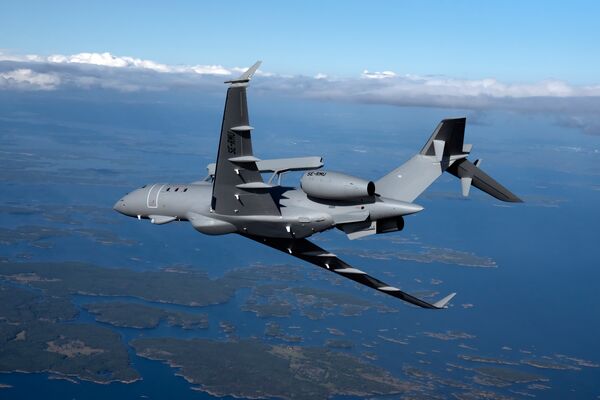
Despite having recently lost out to its E-7 rival for NATO's iAFSC requirement, Saab sees a strong future for its GlobalEye (pictured) platform as part of the alliance's wider AFSC structure. (Saab)
Saab sees a place for its GlobalEye airborne early warning and control (AEW&C) platform within NATO, despite not being included in the initial Alliance Future Surveillance and Control (iAFSC) announcement in late 2023.
Speaking to reporters at the company's Linköping production facility in southern Sweden, chief marketing officer (CMO) of Surveillance at Saab Fredrik Follin said that the Bombardier Global 6000 business jet-based GlobalEye features in NATO's longer term AFSC plans, despite losing out to its Boeing E-7 Wedgetail rival for iAFSC.
“If you look at the official imagery coming out of NATO AFSC, you see that the GlobalEye is placed as one of the elements in this. This is a journey, right? So the AFSC, focusing maybe on 2035, will need a number of different assets that are both manned and unmanned, up in space, in the air, on the surface, and beneath the surface as well. And we are an integrated part in the entire AFSC structure with the GlobalEye, and that has been super important for us to be to have sort of a relevance on there,” Follin said on 20 May.
In terms of NATO's iAFSC decision in November 2023 to acquire six E-7s to replace its 14 Boeing E-3A Sentry Airborne Warning and Control System (AWACS) aircraft, Follin said that Saab had not been approached by the NATO Support and Procurement Agency (NSPA) ahead of its selection, but that including the GlobalEye in the wider AFSC project makes sense.
Looking to read the full article?
Gain unlimited access to Janes news and more...







